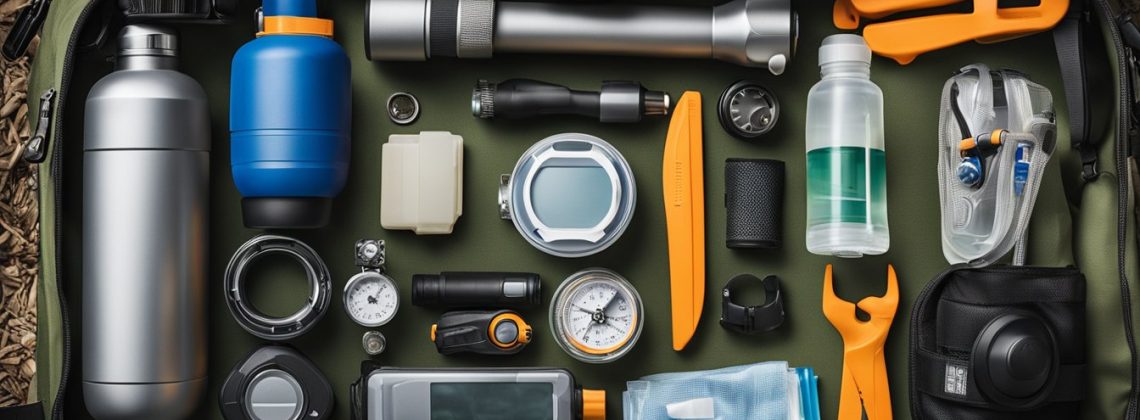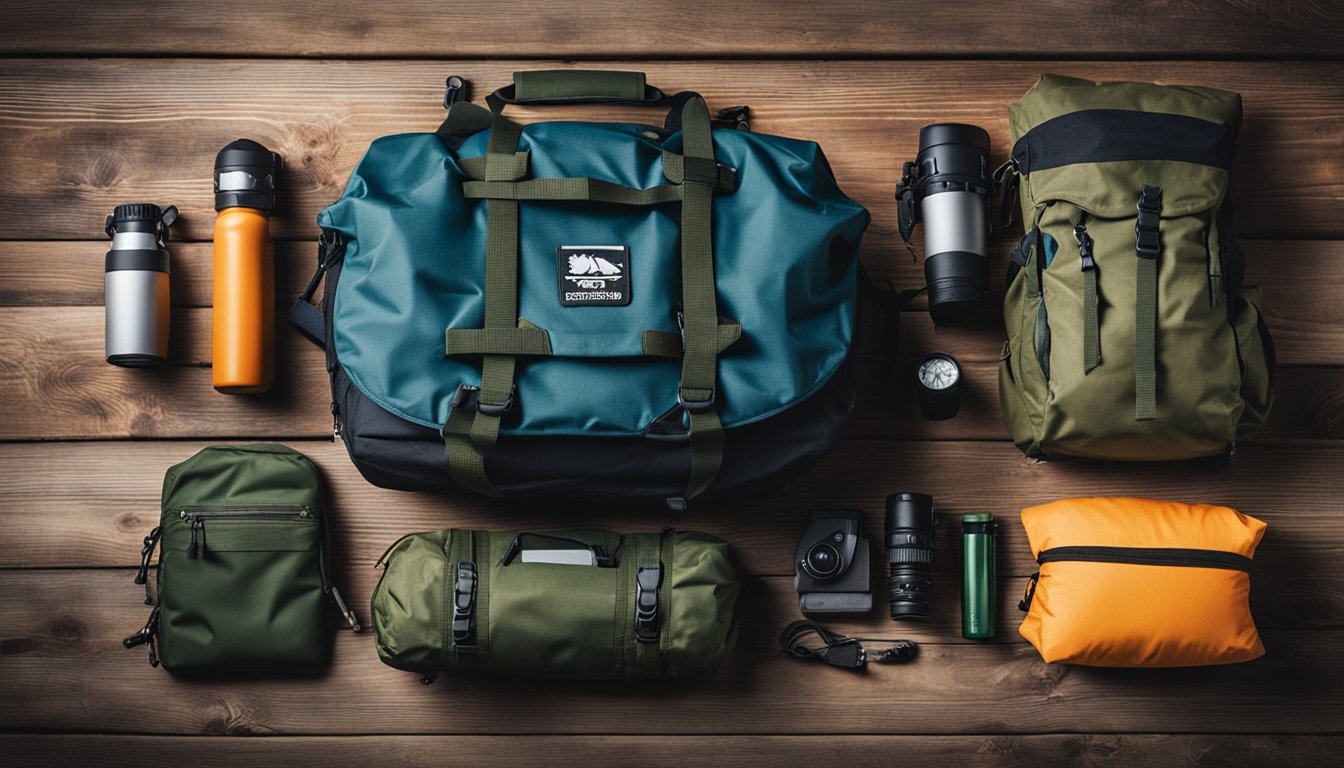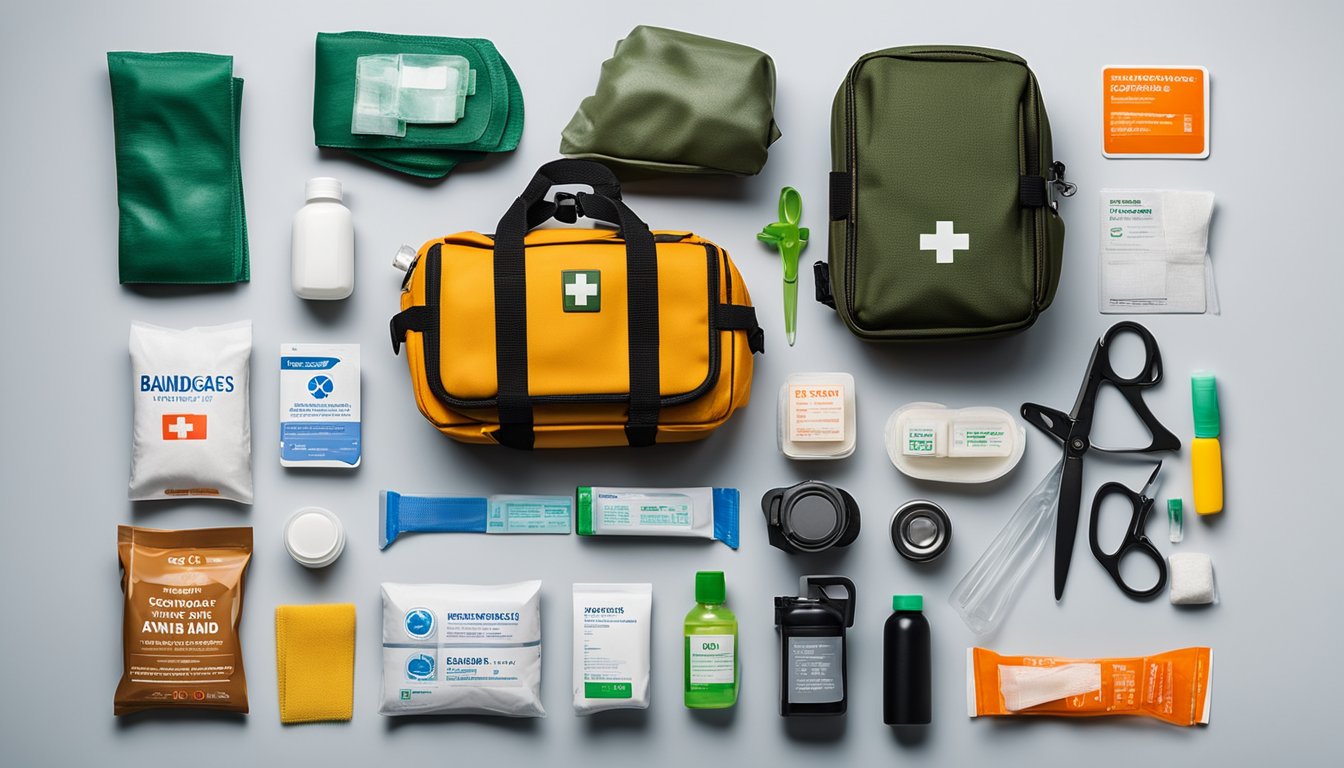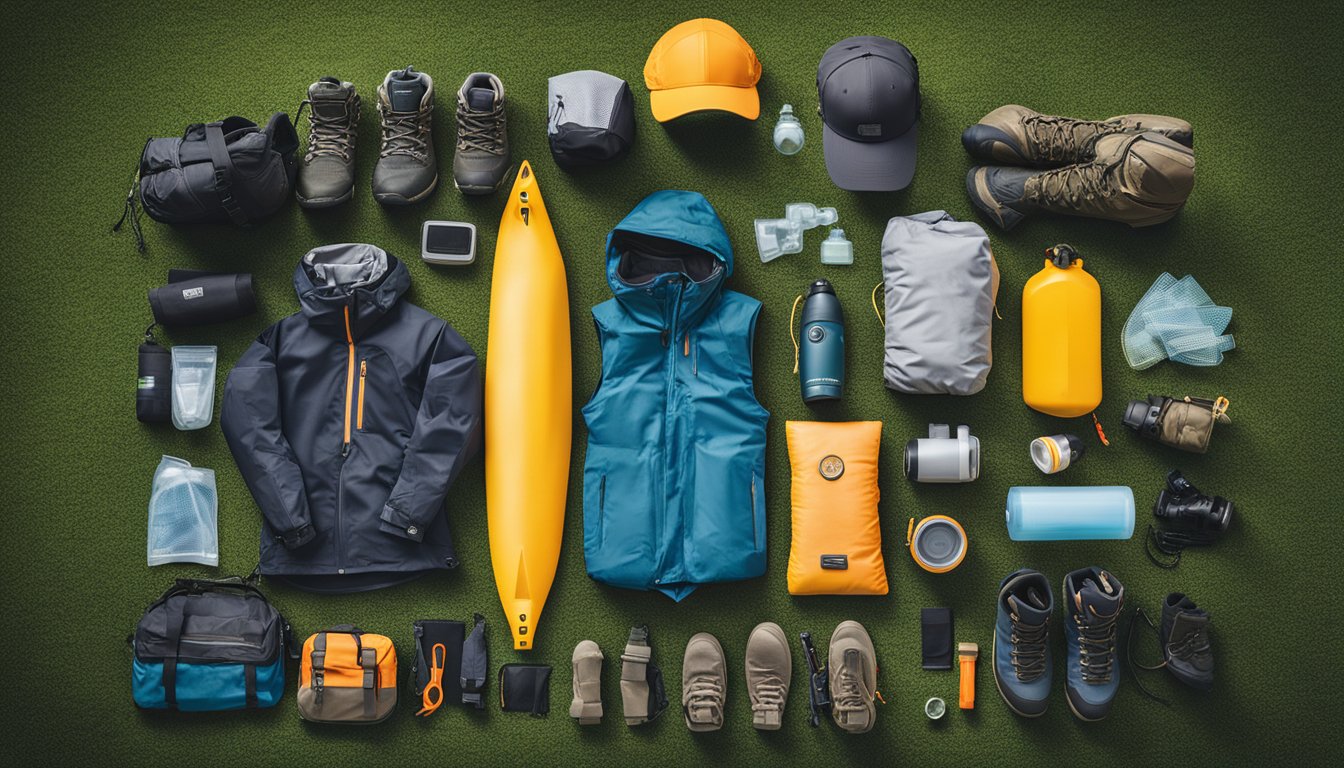
Be Prepared for Anything
When disaster strikes and you need to evacuate your home quickly, having a well-stocked bug-out bag can make all the difference. A bug-out bag, also known as a go-bag or 72-hour kit, is a portable kit that contains essential items to help you survive for up to three days. Whether you’re facing a natural disaster, civil unrest, or other emergency situation, having a bug-out bag can give you the peace of mind you need to face the challenges ahead.
Water and Hydration are the most important items to include in your bug-out bag. The human body can survive for weeks without food, but only a few days without water. Make sure you have at least one liter of water per day, per person, and pack a water filtration system or purification tablets to ensure you can access clean water if needed. Additionally, it’s important to have a sturdy water bottle or hydration bladder to store and carry water with you on the go.
Food and Nutrition are also essential components of a well-stocked bug-out bag. Pack non-perishable, high-calorie foods that are easy to prepare and eat on the go, such as energy bars, trail mix, and canned goods. Don’t forget to include a can opener and utensils for eating. It’s also a good idea to pack some comfort foods or snacks to boost morale during stressful situations.
Key Takeaways
- Water and Hydration are the most important items to include in your bug-out bag.
- Food and Nutrition are essential components of a well-stocked bug-out bag.
- Your bug-out bag should be customized to meet your specific needs and circumstances.
Water and Hydration
When it comes to survival, water is one of the most crucial things to have in your bug-out bag. Without water, you won’t last long in a survival situation. Here are some must-have items for water and hydration:
Water Purification Methods
In a survival situation, you can’t always rely on finding clean water sources. Therefore, it’s essential to have a reliable water purification method in your bug-out bag. Water purification tablets are a lightweight and easy-to-use option. They come in small packets and can be added to water to kill any bacteria or viruses. Another option is a water filter. A water filter can remove impurities and bacteria from water, making it safe to drink. Some filters can even remove viruses. Portable water filters are lightweight and easy to pack in your bug-out bag.
Hydration Packs and Water Bottles
When it comes to carrying water, you have a few options. A hydration pack is a backpack with a built-in water bladder. Hydration packs are convenient because they allow you to drink water hands-free. They’re also easy to refill and can hold a large amount of water. Another option is a water bottle. A reusable water bottle is an eco-friendly option that can be refilled as needed. Look for a water bottle that is durable, leak-proof, and lightweight. Stainless steel water bottles are a great option because they’re durable and can keep your water cold for hours.
Overall, having reliable water and hydration options in your bug-out bag is crucial for survival. Consider adding water purification tablets, a portable water filter, a hydration pack, or a reusable water bottle to your bug-out bag.
Food and Nutrition
When it comes to survival situations, having enough food and water is crucial. In your bug-out bag, you should pack enough non-perishable food items to last you at least 72 hours. Here are some essential food items to consider:
Non-Perishable Food Items
Non-perishable food items are those that don’t require refrigeration and can be stored for a long time. They are ideal for emergency situations where you may not have access to fresh food. Some examples of non-perishable food items that you can include in your bug-out bag are:
- Energy bars and granola bars
- Dried fruits and nuts
- Canned food (such as tuna, chicken, and vegetables)
- Peanut butter and jelly
- Beef jerky
- Crackers and rice cakes
Make sure to check the expiration dates of the food items before packing them. You should also consider your dietary needs and preferences when choosing what to pack.
Cooking Implements
While non-perishable food items are important, you may also want to pack some cooking implements in your bug-out bag. These can help you prepare hot meals and make your food more palatable. Some cooking implements that you may want to consider packing include:
- Portable stove or camping stove
- Fuel canisters
- Mess kit (including a pot, pan, and utensils)
- Water purification tablets or filter
Cooking implements can add weight to your bug-out bag, so consider your priorities carefully when deciding what to pack. If you’re planning to travel in a group, you may be able to share cooking implements to reduce the weight of your individual bags.
Remember, food and nutrition are essential for survival. Pack enough non-perishable food items and cooking implements to last you at least 72 hours. Stay hydrated and make sure to replenish your supplies as needed.
Shelter and Comfort

When bugging out, one of the most important things to consider is your shelter and comfort. You need to have a safe and comfortable place to sleep, rest, and protect yourself from the elements. Here are some essential items to consider when packing your bug-out bag.
Emergency Shelter Options
When it comes to emergency shelter options, you have several choices. One of the most popular options is a tent. A good quality tent can provide you with shelter from the elements and keep you dry and warm. However, tents can be heavy and bulky, so you may want to consider a lightweight and compact option such as a bivy sack or a tarp.
Another option is a hammock. Hammocks are lightweight, easy to set up, and can provide you with a comfortable place to sleep. They are also elevated off the ground, which can keep you safe from ground-dwelling insects and animals.
Sleeping Bags and Mats
A good quality sleeping bag is essential for staying warm and comfortable while bugging out. Look for a sleeping bag that is lightweight, compact, and has a low temperature rating. You may also want to consider a sleeping pad or mat to provide extra insulation and cushioning.
When it comes to sleeping pads, there are several options to choose from. Foam pads are lightweight and affordable, but may not provide enough cushioning for some people. Inflatable pads are more comfortable and can be adjusted to your desired firmness, but may be heavier and more expensive.
In conclusion, having the right shelter and comfort items in your bug-out bag can make all the difference when it comes to survival. Consider your specific needs and preferences when selecting your emergency shelter and sleeping gear and always prioritize quality and durability.
Health and First Aid

When it comes to your bug-out bag, it’s essential to have a well-stocked first aid kit. In a survival situation, injuries can happen at any time, and having the right supplies can make all the difference. Here are some first aid kit essentials to include in your bug-out bag:
First Aid Kit Essentials
- Adhesive bandages: These come in various sizes and shapes to cover small cuts and scrapes.
- Sterile gauze pads: These are used to cover larger wounds and can be secured with tape or a bandage.
- Medical tape: This is used to secure gauze or bandages in place.
- Antiseptic wipes: These are used to clean wounds and help prevent infection.
- Antibiotic ointment: This is used to prevent infection in wounds.
- Tweezers: These are used to remove splinters or other foreign objects from the skin.
- Scissors: These are used to cut gauze or bandages to the right size.
- Instant cold packs: These are used to reduce swelling and pain.
- Disposable gloves: These are used to protect yourself when treating someone else’s injuries.
Personal Medications
In addition to a first aid kit, it’s important to include any personal medications you may need. If you have a medical condition that requires medication, be sure to include enough for at least a few days. Here are some examples of personal medications to include in your bug-out bag:
- Prescription medications: If you take any prescription medications, be sure to include them in your bug-out bag. You may also want to include a copy of your prescription in case you need to get a refill.
- Over-the-counter medications: These can include pain relievers, allergy medication, and antacids.
- Vitamins and supplements: If you take any vitamins or supplements regularly, be sure to include them in your bug-out bag.
Remember to check the expiration dates on all medications and replace them as needed. It’s also a good idea to include a small first aid manual or guide to help you treat injuries in a survival situation.
Tools and Equipment

Multipurpose Tools
When it comes to a bug-out bag, you want to make sure you have tools that can serve multiple purposes. A good example of this is a multi-tool. A multi-tool can have a variety of functions, such as a knife, pliers, screwdriver, and more. It can be a great space-saver in your bag, while still providing you with the necessary tools to survive.
Another useful tool to have is a hatchet or small axe. This can be used for chopping wood, building shelter, and even self-defense if needed. Just make sure it’s not too heavy or bulky to carry around.
Navigation and Communication Devices
In an emergency situation, it’s important to have a way to navigate and communicate with others. A compass and map are essential tools to have in your bug-out bag. Make sure you know how to use them before you need to rely on them.
A two-way radio or satellite phone can also be useful for communication. This can help you stay in contact with others and receive important information. Just make sure you have spare batteries or a way to recharge the device.
In addition to these devices, consider adding a whistle and signal mirror to your bag. These can be used to signal for help if needed.
Clothing and Protection

When it comes to assembling your bug-out bag, clothing and protection are essential considerations. You want to make sure that you are protected from the elements and have the gear you need to stay safe and comfortable.
All-Weather Clothing
When selecting clothing for your bug-out bag, you should consider the climate you will be in and pack accordingly. It’s best to choose clothing that is lightweight, durable, and easy to layer. Here are some items to consider:
- Base Layer: A moisture-wicking base layer is essential for staying dry and comfortable. Look for synthetic materials or wool.
- Insulating Layer: A warm insulating layer, such as a fleece or down jacket, is important for colder climates.
- Outer Layer: A waterproof and windproof shell will protect you from the elements. Look for a jacket that is breathable and has a hood.
- Headwear: A hat or beanie will help keep you warm in colder climates, while a sun hat will protect you from the sun in warmer climates.
- Gloves: A pair of gloves will keep your hands warm and protected from the elements.
Personal Protection Gear
Your bug-out bag should also include personal protection gear to keep you safe in emergency situations. Here are some items to consider:
- First Aid Kit: A comprehensive first aid kit should include items such as bandages, antiseptic, pain relievers, and medical tape.
- Knife: A sharp knife is a versatile tool that can be used for a variety of tasks, from cutting rope to preparing food.
- Flashlight: A reliable flashlight is essential for navigating in the dark. Look for a model that is waterproof and has a long battery life.
- Whistle: A whistle is a simple but effective way to signal for help in an emergency.
- Sunglasses: Sunglasses will protect your eyes from the sun’s harmful rays and help you see better in bright conditions.
By including these clothing and protection items in your bug-out bag, you will be better prepared to handle emergency situations and stay safe and comfortable in the outdoors.
Frequently Asked Questions
What are the essential items to include in a basic bug-out bag for survival?
A basic bug-out bag should have the essentials you need to survive for at least three days. These include water, food, shelter, clothing, first aid kit, and tools. You should also consider adding a flashlight, a multi-purpose knife, a fire starter, and a map and compass to navigate your way out of danger.
Which food and water supplies are critical for a 72-hour emergency kit?
Water is the most important item to include in your emergency kit. You should pack at least one gallon of water per person per day. Food should be non-perishable and easy to prepare, such as canned goods, energy bars, and dried fruit. You should also pack a portable water filter or water purification tablets in case you need to find water in the wild.
How should one prioritize medical supplies in an emergency go bag?
Medical supplies should be a top priority in your emergency go bag. You should pack a first aid kit that includes bandages, gauze, antiseptic wipes, pain relievers, and any prescription medication you need. You should also include a basic medical guide, such as a first aid manual, to help you treat injuries or illnesses.
What are the top tools and utilities needed for a well-equipped bug-out bag?
A well-equipped bug-out bag should have a variety of tools and utilities to help you survive in different situations. These include a multi-purpose knife, a fire starter, a flashlight, a map and compass, a signaling device, and a portable water filter. You should also consider adding a small stove, a pot and utensils, and a small axe or saw for cutting wood.
What personal identification and documents are necessary for an evacuation kit?
Personal identification and documents are important to include in your evacuation kit. You should pack copies of your driver’s license, passport, and any other important documents, such as insurance policies and medical records. You should also include a list of emergency contacts and any important phone numbers.
Can you suggest a minimalist approach to packing a bug-out bag for quick evacuation?
If you need to evacuate quickly, a minimalist approach to packing your bug-out bag can be helpful. You should focus on the essentials, such as water, food, shelter, clothing, first aid kit, and tools. Pack a lightweight tarp or emergency blanket for shelter, and energy bars or other non-perishable food. You should also pack a multi-purpose knife, a fire starter, and a flashlight. Remember to pack only what you need and keep your bag as light as possible.

Leave a Reply